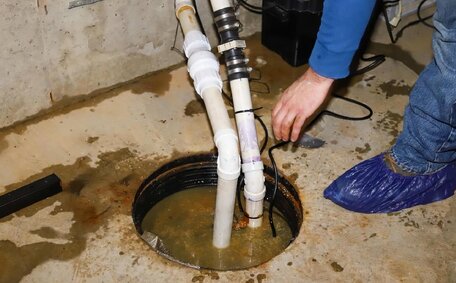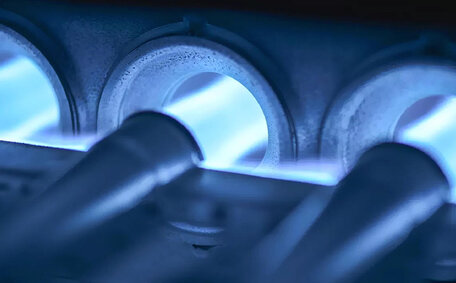Introducing Pipe Relining: A Modern Alternative for Drain Repairs
Pipe relining is an innovative drain repair technique that provides a less invasive solution compared to traditional methods of excavating and replacing pipes. It has become an increasingly popular option, especially in built-up urban areas like Paddington, Sydney where preserving infrastructure and heritage buildings is important.
Pipe relining involves inserting a resin-saturated liner into damaged pipes, which sets to create smooth, seamless pipe interiors, fixing existing cracks and leaks. This forms a robust 'pipe within a pipe’, aligned with the original pipe’s path.
One of the notable benefits of pipe relining is its versatility for use in drain pipes with multiple bends and angles or complex layouts.
Our over 25 years of plumbing experience enable us to excel in pipe repair, notably through advanced pipe relining techniques that ensure reliable and non-disruptive services throughout Paddington.
What Is Pipe Relining and How It Works
Pipe relining is a trenchless pipe repair process that involves inserting a resin-impregnated liner into an existing damaged pipe to essentially forge a new seamless pipe within.
The technique relies on CCTV drain cameras to inspect pipes and identify any defects such as cracks, breaks, or blockages. This innovative approach can used repair the pipe whilst avoiding the need to excavate trenches or break walls and floors.
Pipe relining is effective for common urban drainage materials including PVC, concrete, clay, galvanised steel, and cast iron. It remains suitable for rectifying issues even when pipes present challenging bends angles and intricate layouts. This method adeptly relines sewer systems with minimal impact and offers an eco-friendlier option than conventional pipe replacement.
The Pipe Relining Process Step-By-Step
The pipe lining process involves the following key steps:
- Initial CCTV Drain Inspection: A specialist plumber, as part of our comprehensive plumbing services, feeds a high-resolution drain camera through the pipes to locate any damage, blockages, tree root invasion or other faults.
- Pipe Cleaning: This step ensures the drainage system is ready to create new seamless pipe surfaces, using high-pressure water jetting and industrial drain cleaners to clear any blocked drains of built-up deposits.
- Liner Installation: The liner is inserted into the pipe after comprehensive cleaning, with resin into the felt liner introduced carefully through a specific entry point. An inflatable bladder is applied, its purpose to push the liner firmly against the inner pipe walls, thereby helping to create new seamless strength within the pipework.
- Curing Phase: The liner undergoes curing in situ through the application of hot water or steam, solidifying the epoxy resins to develop a novel, sleek, jointless and rust-resistant internal pipe surface.
- Final CCTV Inspection: A post-installation CCTV inspection checks the lined pipe for a quality water-tight seal. Any accessories like lateral connections are reinstated.
Pipe relining typically completes within one to two days, requiring minimal structural alterations. It returns your pipes to optimal flow, ensuring your pipe system performs efficiently without the major disruption of traditional pipe replacement digging.
Advantages of Pipe Relining Over Traditional Replacement
Pipe relining presents several advantages over conventional pipe replacement:
- Less invasive and disruptive - Pipes are accessed with minimal excavation, often only requiring small entry points.
- Preserves landscaping and infrastructure - Avoiding large-scale excavation prevents destruction of gardens, outdoor areas and heritage listed properties.
- No joints or seals - The seamless epoxy liner provides a jointless, corrosion-resistant inner pipe surface with no weak points.
- Resists future root invasion - The smooth liner prevents root intrusions down the track compared to joints of newly installed piping.
- Maintains flow efficiency -Pipe relining preserves the full diameter without flow restrictions from pipe scale build-up.
- Cost-effective long term solution – A fraction of the price of replacement and comes with long warranties against defects.
For pipe repair needs marked by bends, angles or intricate configurations, relining provides a sustainable solution without the need for costly and disruptive replacement tactics.
Pipe Materials Compatible with Relining
Pipe relining is apt for all types pipes repairs and restoration, covering a wide array of standard urban drainage materials:
- Clay pipes - One of the most common legacy pipe materials found in older homes.
- Cast iron - A common pre-PVC mid-20th century pipe material.
- PVC pipes - Modern plastic piping that can also degrade and crack over time.
- Concrete - Substantial pipes typically used for sewer and stormwater systems.
Pipe relining can address a range of pipe diameters from 50mm to 325mm, and tackle lengths of pipe up to 60 metres, contingent on access. Smooth bends and offsets even at sharp angles pose no issue with the flexibility of epoxy liners and CCTV camera-guided installation.
Our proficient plumbers can reline various residential and commercial pipe layouts, demonstrating our capability in tackling diverse relining challenges. We collaborate intimately with specialised experts to offer comprehensive pipe relining services, ensuring repairs of exceptional quality.
Relining Pipes with Complex Bends and Angles
One of the distinct advantages of pipe relining is the ability to manage repairs even when drainage pipes feature multiple bends, offsets or 90 degree angles. The resin-impregnated felt liners are extremely flexible, easily navigating through tight turns.
Our specialist drain technicians use high-resolution CCTV drain cameras on flexible heads to visually guide the liner down even the most convoluted pipes. A robotic cutter can also be employed to clear intrusive roots or debris at bends without causing damage to pipes. To make sure a new seamless liner is installed correctly, it will follow the exact path of the existing pipe, regardless of the number of bends or complexity of angles.
The curing process sets the liner firmly in place against the pipe walls, creating a hard-wearing repaired pipe that stands up well to water flows and pressure at bends. As long as drainage camera access can fit through, pipe relining allows pipe repairs featuring multiple angles without the need for invasive pipe replacement.
Cured-In-Place Pipe (CIPP) Liners for Any Shape
Cured-in-place pipe (CIPP) relining is an innovative technology allowing the custom-fitting of pipe repairs to match any dimensions or layouts. The process involves inserting flexible liners impregnated with heat or UV-curable resins into damaged areas.
These CIPP liners can skilfully be steered into damaged pipe systems, navigating multiple bends, 90-degree angles, and offsets with ease. Once in place, the resin is cured to harden the liners, moulding them to the exact shape of the original pipes. This creates a seamless, joint-free lining matching any configuration of existing pipes.
Paddington Plumbing collaborates with specialist CIPP lining contractors to deliver methods used to repair pipe routes of complex nature. This allows relining fixes for inaccessible pipe sections without the need for breaking up walls and floors as required in pipe replacement projects.
From simple straight pipes to intricate multi-angled networks, CIPP liners deliver effective pipe rehabilitation with a neater, less invasive approach. They restore structural stability and flow efficiency without disturbing your property or landscaped outdoor areas.
Bendy Packers for Tight 90-Degree Elbows
When relining pipes featuring tight 90-degree bends, specialised equipment known as 'bendy packers’ allow the liner to be firmly pressed into angles. These adjustable, inflatable packers are fed through along with the resin-impregnated felt liner on a drain camera.
The bendy packers navigate the difficult elbow then inflate at the bend to lock the liner tightly into the corner. This ensures a snug fit, creating new robust sections without creases or weak spots at acute angle transitions. The resin is then cured to set the liner permanently in place.
Using a cctv drain camera in conjunction with bendy packers gives plumbers greater control when relining complex pipe routes with multiple tight corners or angles under 90 degrees. They deliver reliable, long-lasting repairs without compromise to flow efficiency or pipe integrity at critical high-stress areas of pipe systems.
Limitations of Pipe Relining
While pipe relining is suitable for repairing pipes with complex bends and angles, there are some limitations to be aware of:
- Very small diameter pipes under 50mm are generally too narrow for pipe relining.
- Severely damaged, misaligned or fully collapsed pipes may not be candidates that can relined effectively.
- The resin liners have thickness limits so cannot reinforce overly corroded pipes.
- Whilst able to navigate tight bends, extremely twisted or winding sewer lines can pose access issues.
- Lateral connections and junctions may need to be reinstated following the relining process.
Our plumbers conduct initial CCTV drain inspections to evaluate pipes individually and provide accurate quotes. They can advise if pipe relining is suitable or if full replacement is required. We work closely with expert relining contractors to ensure that repairs, no matter how complex, are delivered with precision.
For most properties in Paddington area featuring tricky pipe routes, angles and offsets, pipe relining ensures reliable restoration of pipes without the turmoil of breaking up walls, floors, or landscaped gardens.
The Importance of CCTV Drain Inspections
A CCTV drain inspection is crucial before undertaking pipe relining on compromised sewer lines. A detailed camera survey clearly identifies any damage, blockages, tree root invasion or other faults within the pipes.
It enables our licensed plumbers to assess repair feasibility and customise the pipe relining strategy for your sewer system. We can determine the exact length and layout of pipes, the types of bends, joints and angles, and the extent of corrosion or cracks.
CCTV inspections also locate connections to sewer pipes, stormwater drains and property drain outlets that may need to be reinstated following relining. By understanding the complete pipe routing and condition, we ensure the resin-impregnated liners can be inserted and sealed securely.
Pipe relining relies on a thorough knowledge of the existing pipe system from drainage camera footage in order to repair and restore pipes to optimal function. Skilled CCTV inspection and reporting provides the roadmap for successful long-lasting relining of your sewer pipe even with complex configurations.
Cost Saving with Trenchless Pipe Relining
Drain pipe relining is significantly cost-effective compared to the expense of traditional pipe replacement, offering numerous benefits. As a trenchless method that avoids major excavations, it reduces sewer repair costs through several avenues:
- Lower labour costs - Fewer man-hours are required due to the elimination of manual excavation.
- Lower equipment costs - Specialist relining tools instead of backhoes, jackhammers, etc.
- Minimised downtime & disruption - Water, gas and sewer systems stay operational during short 1-2 day relining.
- Landscaping remains intact - Avoids damaging outdoor spaces, gardens, or heritage features.
- Longer lifespan - Epoxy pipe liners boast a design life of over 50 years, as opposed to around 20 years for new pipes.
Over the longer term, pipe relining provides excellent value for money. The process, often used as a trenchless pipe solution, can cost considerably less than replacement, touting greater longevity and typically supported by extensive manufacturer warranties.
For the residents and businesses of Paddington, used trenchless pipe relining methods allow for critical repairs with minimal impact to properties or infrastructures. This maintains the charm and heritage appeal of the neighbourhood.






